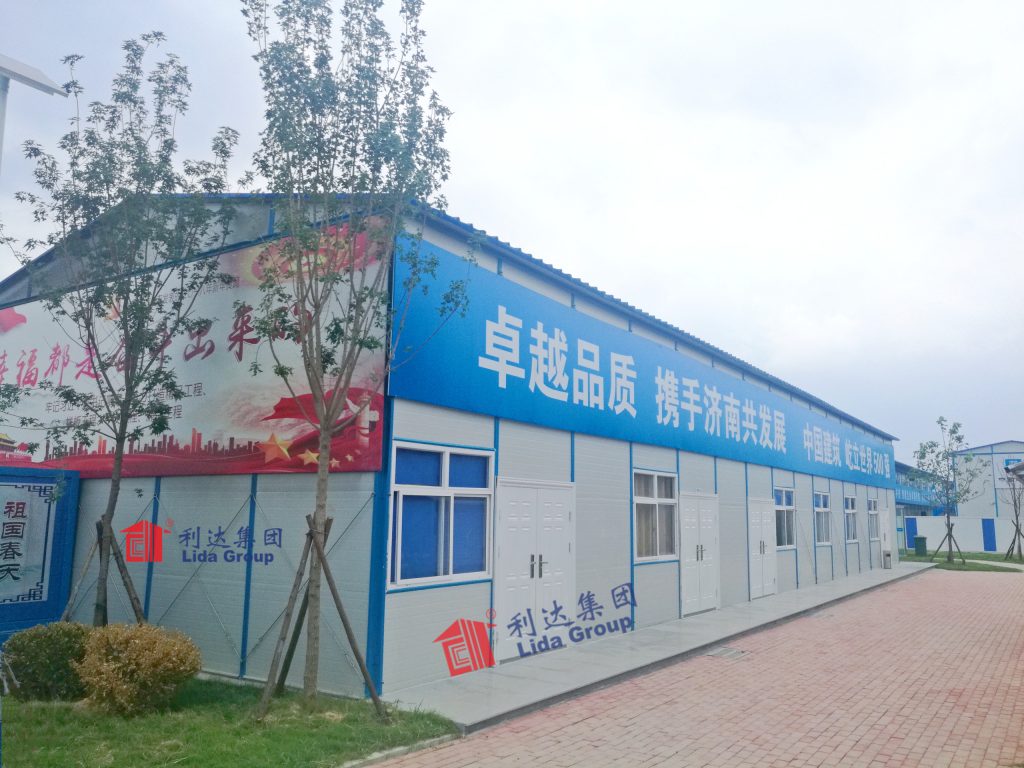**The Transformation of Construction Logistics**
Global construction projects face intensifying pressure: urban sites lack space, remote locations struggle with logistics, sustainability mandates tighten, and skilled labor shortages persist. Traditional site offices—shipping containers or prefabricated units—often compromise functionality, efficiency, and environmental compliance. As project timelines accelerate, industry leaders are embracing Lida Group’s **Mobile Sandwich Panel Solutions**, revolutionizing temporary infrastructure with speed, sustainability, and smart operations. This marks a strategic pivot toward redefining construction site management.
Section 1: The Inefficiencies of Traditional Site Offices
**1.1 Legacy Systems & Their Limitations**
– **Shipping Containers:**
– *Thermal Issues:* Uninsulated steel causes temperatures to swing 20–40°C daily
– *Space Constraints:* Fixed layouts hinder workflow optimization
– *Safety Risks:* Poor ventilation and lighting increase accident rates
– **Conventional Prefab Units:**
– *Slow Deployment:* 4–8 weeks for manufacturing and installation
– *Energy Waste:* Heating/cooling consumes 35–50 kWh/m²/month
– *Limited Reusability:* 60% require major refurbishment after 2 projects
**1.2 Hidden Costs Impacting Projects**
| **Cost Factor** | **Traditional Office** | **Impact** |
|——————|————————|————|
| Energy Consumption | $1,200–$2,500/month | 5–8% of project overhead |
| Installation Delays | 3–6 weeks lost | $18,000–$50,000/week penalty |
| Post-Project Refurbishment | $15,000–$40,000/unit | 30% asset depreciation |
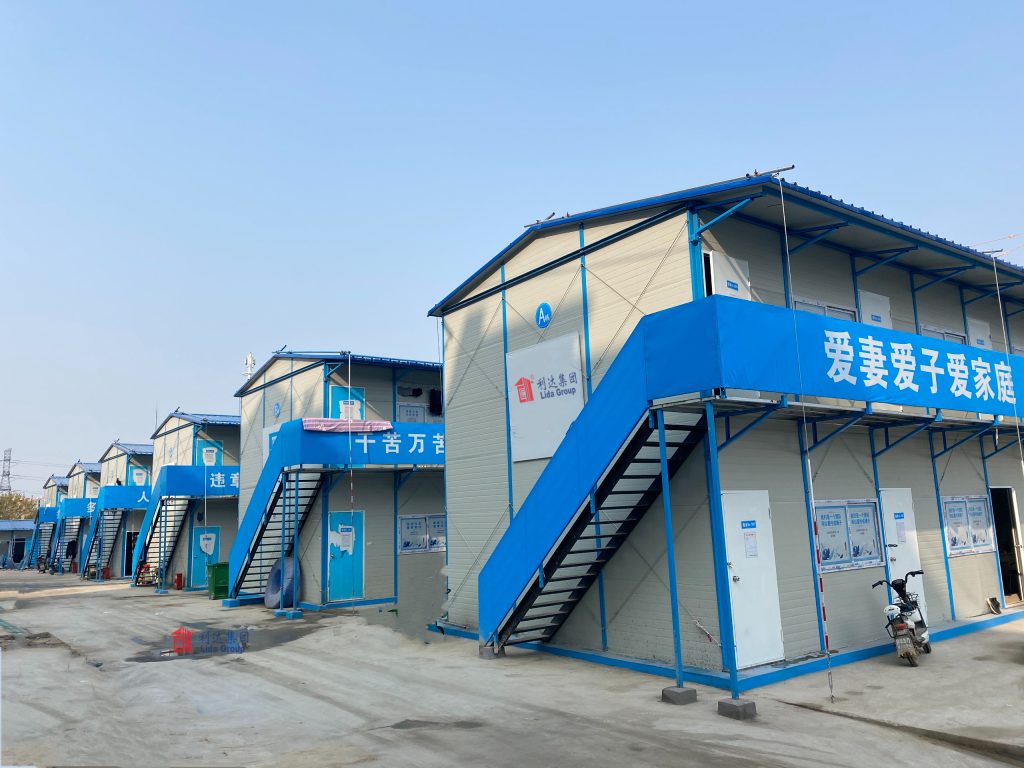
Section 2: Lida’s Mobile Sandwich Panel System – Engineering Breakdown
**2.1 Core Architecture**
*Composite Panel Structure (100mm/150mm Options):*
| **Layer** | **Material** | **Function** |
|———–|————–|————–|
| Outer Skin | 0.5mm Galvanized Steel | Corrosion resistance (C5-M class) |
| Insulation Core | PIR Foam (λ=0.023 W/mK) | Thermal barrier (R-25 for 100mm) |
| Inner Lining | 10mm Fiber-Reinforced Polymer | Impact resistance, hygienic surface |
**2.2 Technical Superiority**
– **Thermal Performance:** Maintains 19–23°C interior in -15°C to 45°C ambient
– **Structural Resilience:**
– Wind load resistance: 150 km/h
– Crane-lift capable (integrated pick points)
– Fire rating: EI 60 (critical for site safety compliance)
– **Deployment Speed:**
– Foundation-free installation on screw jacks/leveling pads
– Operational within 48 hours of delivery
Section 3: Adoption Drivers for Major Construction Firms
**3.1 Operational Efficiency Gains**
– **Rapid Deployment:**
– 90% factory completion reduces on-site assembly to <72 hours
– Modular expansions added during active projects
– **Smart Site Integration:**
– Pre-installed 5G/Wi-Fi 6 mesh networks
– IoT sensors for occupancy, air quality, and equipment tracking
– **Reconfiguration Flexibility:**
– Walls repositioned overnight for changing team sizes
– Convertible spaces (meeting room → lab → medical post)
**3.2 Sustainability Compliance**
– **Carbon Reduction:**
– 68% lower embodied carbon vs. modified containers
– Energy use reduction: 8,200 kWh/year per 50m² unit
– **Circular Economy Alignment:**
– 12-year design life with 5+ project reuse cycles
– 95% recyclable materials (steel/PIR/fiber polymer)
**3.3 Safety & Regulatory Advantages**
– **Integrated Safety Systems:**
– Emergency lighting with 72-hour battery backup
– Seismic-resistant anchoring for high-risk zones
– HEPA filtration for dust/chemical protection
– **Global Compliance:**
– ISO 14001 (Environmental Management)
– BS EN 1090 (Structural Steel Execution)
– OSHA 1926 (US Construction Safety)
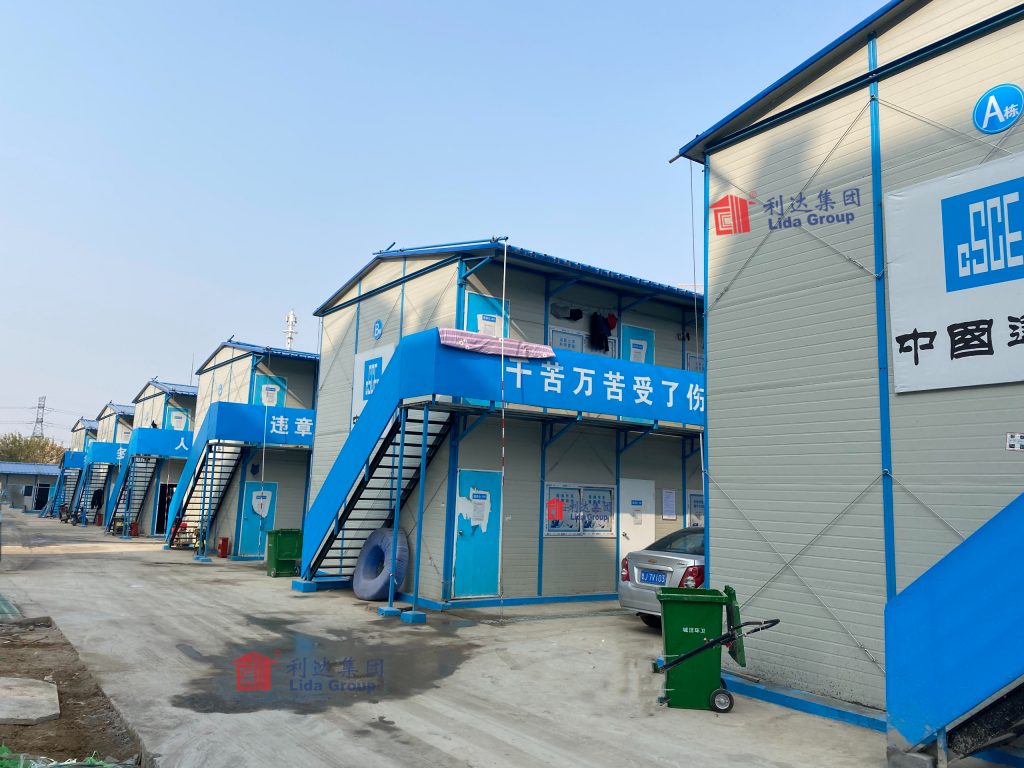
Section 4: Implementation Case Studies (Anonymized)
**4.1 High-Rise Urban Project (Asia)**
– **Challenge:** 0.2-hectare site with zero laydown area; noise/dust restrictions
– **Solution:**
– 3-story sandwich panel offices stacked vertically
– Solar-integrated roofs offsetting 40% energy use
– Noise-dampened walls (45 dB reduction)
– **Outcomes:**
– 11-day faster project launch vs. schedule
– Zero non-compliance fines over 28-month duration
**4.2 Arctic Infrastructure Program (Scandinavia)**
– **Challenge:** -35°C temperatures; 4-month darkness cycle
– **Innovations:**
– Triple-glazed electrochromic windows
– Hydronic floor heating powered by waste heat recovery
– Wind-resistant interlocking system (200 km/h certification)
– **Results:**
– Maintained 22°C interior with 60% less energy
– 100% uptime during extreme weather events
**4.3 Mining Camp Expansion (Australia)**
– **Challenge:** Remote desert site; 500-person temporary facilities
– **Execution:**
– 120 office/lab units installed in 18 days
– Greywater recycling saving 280,000 liters/month
– Dust-sealed ventilation with real-time air monitoring
– **Impact:**
– $3.2M saved vs. conventional fly-in camps
– Zero safety incidents linked to facility failures
Section 5: Economic Analysis – ROI Driving Adoption
**5.1 Cost Comparison (50m² Site Office – 3-Year Cycle)**
| **Cost Category** | **Modified Container** | **Lida Sandwich Panel** |
|——————-|————————|————————–|
| Initial Purchase | $24,000 | $38,000 |
| Installation | $8,500 | $2,200 |
| Energy (36 months) | $16,200 | $5,400 |
| Relocation (2x) | $12,000 | $3,600 |
| **TOTAL** | **$60,700** | **$49,200** |
**5.2 Value-Added Benefits**
– **Productivity Gains:**
– 15–25% improved workflow from ergonomic layouts
– Reduced sick days (IAQ/temperature stability)
– **Risk Mitigation:**
– Avoided penalties for delayed mobilization
– Lower insurance premiums (certified fire/storm resilience)
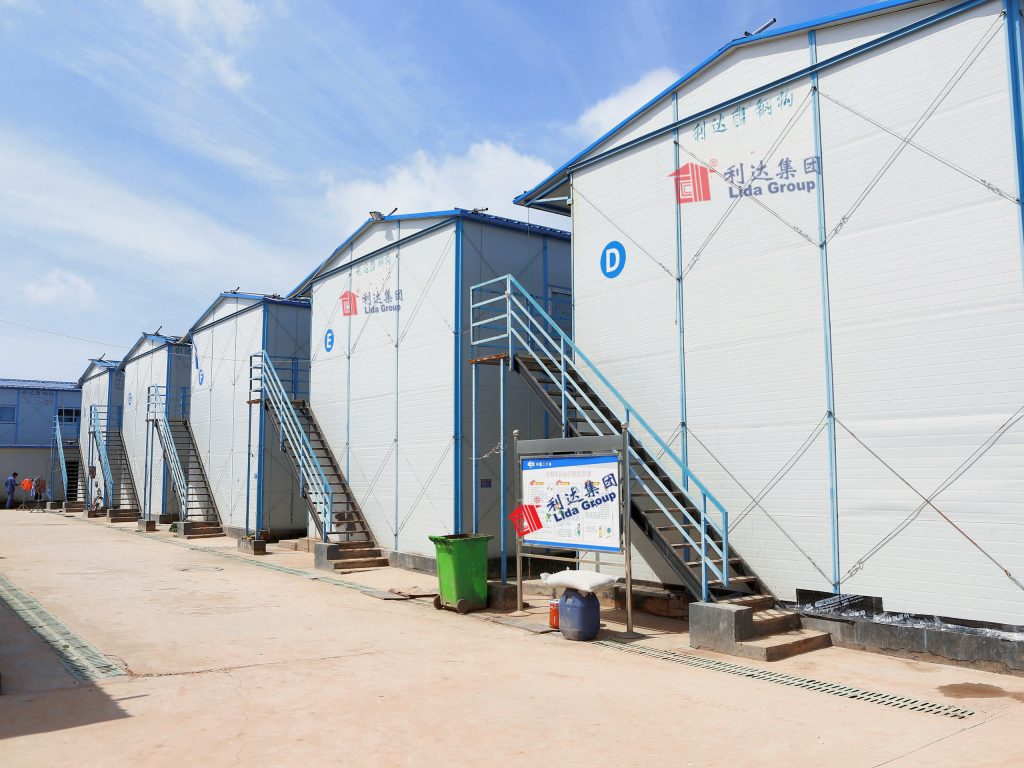
Section 6: Integration with Construction 4.0
**6.1 Digital Twin Synchronization**
– BIM models update in real-time via:
– Structural health monitoring (strain gauges in panels)
– Utility consumption tracking (power/water/data)
– Space utilization analytics (IoT occupancy sensors)
**6.2 Autonomous Operations**
– Self-regulating environments:
– HVAC adjusts to occupancy/weather forecasts
– Lighting dims via daylight harvesting
– Air purification triggers during high dust alerts
**6.3 Data-Driven Site Management**
– Centralized dashboards display:
– Carbon footprint per department
– Safety compliance rates
– Resource allocation efficiency
Section 7: Overcoming Industry Barriers
**7.1 Perception Shift**
– **Myth:** “Temporary = Low Quality”
– *Reality:* Commercial-grade finishes rival permanent offices
– **Myth:** “High Upfront Cost”
– *Reality:* 22-month average payback via operational savings
**7.2 Supply Chain Transformation**
– Regional manufacturing hubs enabling 2-week delivery globally
– Blockchain-tracked materials ensuring ethical sourcing
**7.3 Regulatory Alignment**
– Lida-led industry coalitions advancing:
– ISO 21787 (Prefab Site Structures)
– EN 13830 (Dynamic Thermal Performance Standards)
Conclusion: Redefining Mobility in Construction
Lida Group’s Mobile Sandwich Panel Solutions represent a fundamental shift in temporary construction infrastructure—transforming site offices from logistical necessities into strategic assets. The adoption by industry leaders validates three critical advancements:
**1. Operational Revolution:**
– Deployment accelerated by 75%, turning offices from project bottlenecks to launch accelerators
– Reconfigurable layouts supporting agile project management
– Energy autonomy cutting grid dependence by 40–60%
**2. Sustainability Leadership:**
– 68% carbon reduction versus legacy systems
– Near-total elimination of construction waste via precision manufacturing
– Full circularity enabling decade-long service life across projects
**3. Human-Centric Innovation:**
– Intelligent environments boosting productivity and safety
– Extreme-weather resilience protecting personnel and equipment
– Seamless integration with digital construction workflows
The implications extend beyond temporary offices:
– **Permanent Modular Construction (PMC):** Demonstrating viability of sandwich panels for core project elements
– **Disaster Response:** Blueprint for rapidly deployable critical infrastructure
– **Urban Regeneration:** Minimizing community disruption during redevelopment
As firms like Skanska, Vinci, and Lendlease integrate these solutions, a new industry standard emerges—one where mobility signifies not transience, but resilience, efficiency, and responsibility. Lida Group has reengineered not just structures, but the very philosophy of temporary space: proving that the most dynamic sites deserve infrastructure as adaptable, robust, and forward-looking as the projects they enable. This is the future of construction—modular, mobile, and meticulously engineered.
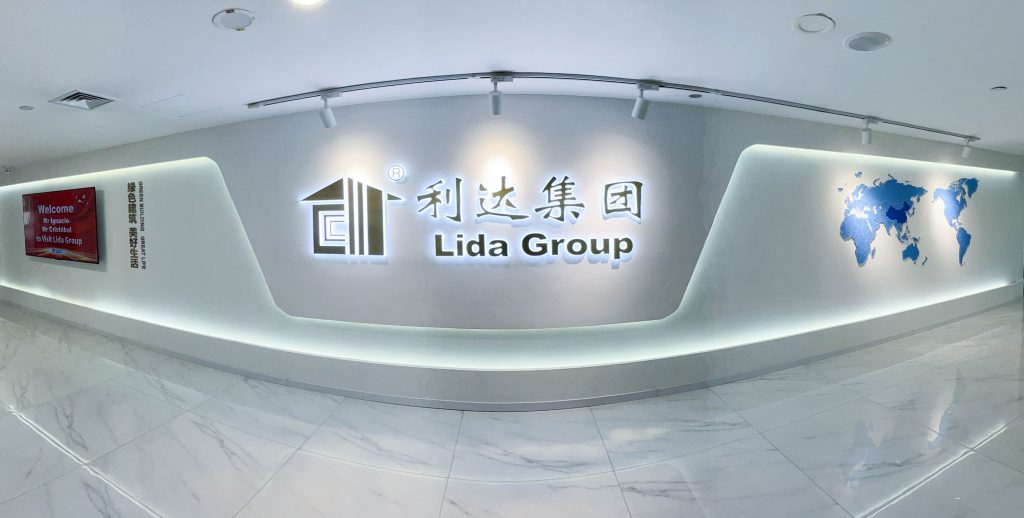
Related news
-
Eco-Conscious Innovation: Lida Group's High Quality Prefab Houses Reduce Energy Use by 40% with Advanced Sandwich Panels
2025-07-15 14:02:39
-
Customizable Living Spaces: Lida Group Delivers Mobile Prefab Houses with Flexible SANDWICH PANEL HOUSE Configurations
2025-07-15 11:49:56
-
Future-Proof Housing: Lida Group Integrates Smart Tech into Mobile High Quality Prefab Houses Using Sandwich Panel Architecture
2025-07-14 16:15:58
contact us
- Tel: +86-532-88966982
- Whatsapp: +86-13793209022
- E-mail: sales@lidajituan.com


